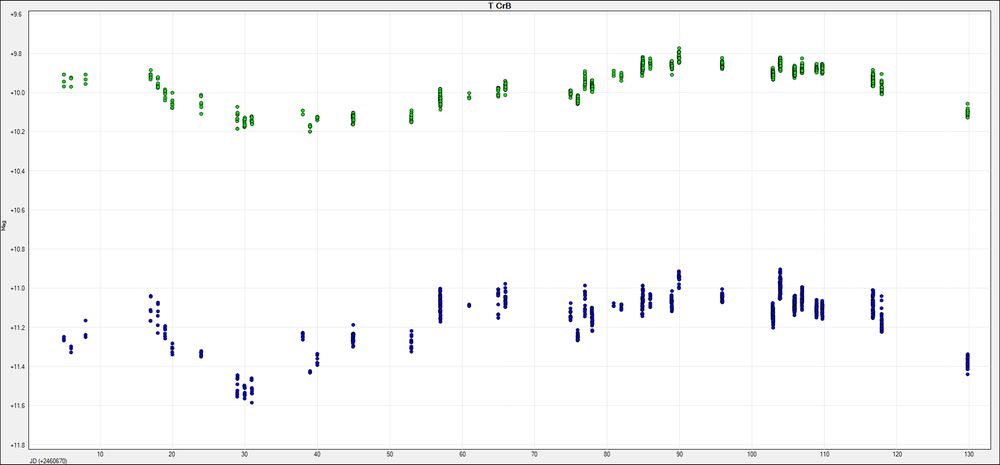
The place: San Pedro Mártir, Baja California, very close to the National Observatory.
#astronomy #astrophotography

The place: San Pedro Mártir, Baja California, very close to the National Observatory.
#astronomy #astrophotography
#astronomy 🧪🔭

#astronomy 🧪🔭
#Astronomy

#Astronomy
#Astronomy

#Astronomy




Picture number 1 is my latest capture of the largest known globular cluster in the Northern Hemisphere: M13, which I believe contains approximately 500,000 stars.

Picture number 1 is my latest capture of the largest known globular cluster in the Northern Hemisphere: M13, which I believe contains approximately 500,000 stars.
#astronomy

#astronomy

#landscape

#landscape
The blue spectrum corresponds to when T CrB was close to its peak brightness at the end of March. The red spectrum was captured three days ago, when this star seemed to be less bright. (2/2)

The blue spectrum corresponds to when T CrB was close to its peak brightness at the end of March. The red spectrum was captured three days ago, when this star seemed to be less bright. (2/2)
These are my most recent photometric observations of this recurrent nova star. (1/2)
#astronomy

These are my most recent photometric observations of this recurrent nova star. (1/2)
#astronomy
#astronomy #astrophotography

#astronomy #astrophotography
Due to the bad weather, I have been revisiting my past pictures, like this one of IC 342. I am slowly improving my processing skills. Had to share this with you.
#astronomy #astrophotography

Due to the bad weather, I have been revisiting my past pictures, like this one of IC 342. I am slowly improving my processing skills. Had to share this with you.
#astronomy #astrophotography
#astronomy #astrophotography

#astronomy #astrophotography
#astronomy #astrophysics #astrophotography #space #nightsky #outdoors #galaxy #AGN

#astronomy #astrophysics #astrophotography #space #nightsky #outdoors #galaxy #AGN
Find me in YouTube as:
@CosmoSidewalk
#astronomy #lunareclipse #lunareclipse2025

Find me in YouTube as:
@CosmoSidewalk
#astronomy #lunareclipse #lunareclipse2025
#astronomy #astrophotography

#astronomy #astrophotography
#astronomy #astrophotography

#astronomy #astrophotography
#astronomy #astrophotography #space #constellation #stars #Outdoors #Nightsky #nightphotography #galaxy

#astronomy #astrophotography #space #constellation #stars #Outdoors #Nightsky #nightphotography #galaxy
#astronomy #astrophotography #space #nebula #nebulae #constellation #stars

#astronomy #astrophotography #space #nebula #nebulae #constellation #stars
#astrophotography #astronomy #space #nightsky #nightphotography #photography #outdoors #stars #nebula #nebulae

#astrophotography #astronomy #space #nightsky #nightphotography #photography #outdoors #stars #nebula #nebulae
#astronomy #science #astrophotography #nightsky #outdoors #stars

#astronomy #science #astrophotography #nightsky #outdoors #stars

